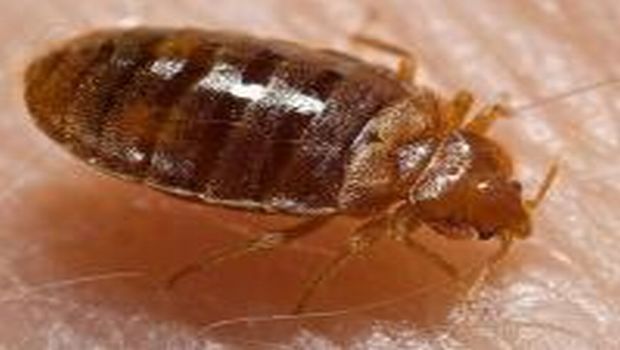Bed Bugs Can Survive Freezing Temperatures, But Cold Can Still Kill Them
Exposing bed bug-infested clothing or other small items to freezing temperatures may be a viable control option for people at risk of bed bug infestations. However, a new study has found that bed bugs may be less susceptible to freezing temperatures than previously reported.


A bed bug, Cimex lectularius, is shown feeding on a human host.
Exposing bed bug-infested clothing or other small items to freezing temperatures may be a viable control option for people at risk of bed bug infestations. However, a new study has found that bed bugs may be less susceptible to freezing temperatures than previously reported.
In an article in the Journal of Economic Entomology called "Cold Tolerance of Bed Bugs and Practical Recommendations for Control," the authors describe how exposing bed bugs to freezing temperatures affects them, and they provide practical recommendations for management of potentially infested items.
Bed bugs, like many other insects, use a "freeze-intolerant" strategy against the cold, meaning they attempt to protect themselves from freeze injury by lowering the freezing point of their body fluids. For this study, the researchers evaluated the supercooling point (SCP) and the lower lethal temperature (LLT) for all life stages of bed bugs, as well as their potential to feed after exposure to sublethal temperatures.
The authors found that in order to achieve 100 percent mortality, a minimum exposure time of 80 hours at minus 16 degrees celcius is required for all life stages. Temperatures below minus 15 degrees celcius are sufficient to control all life stages of bed bugs after 3.5 days, while temperatures below minus 20 degrees celcius require only 48 hours. They also observed bed bug eggs surviving in short-term exposures to temperatures as low as minus 25 degrees celcius.
Homeowners can place bed bug-infested items in a freezer to destroy them. However, the authors recommend that the items be placed in plastic bags and that they remain in the freezer for two to four days, depending on the freezer's temperature.
Source: Entomological Society of America
Newsletter
Stay prepared and protected with Infection Control Today's newsletter, delivering essential updates, best practices, and expert insights for infection preventionists.